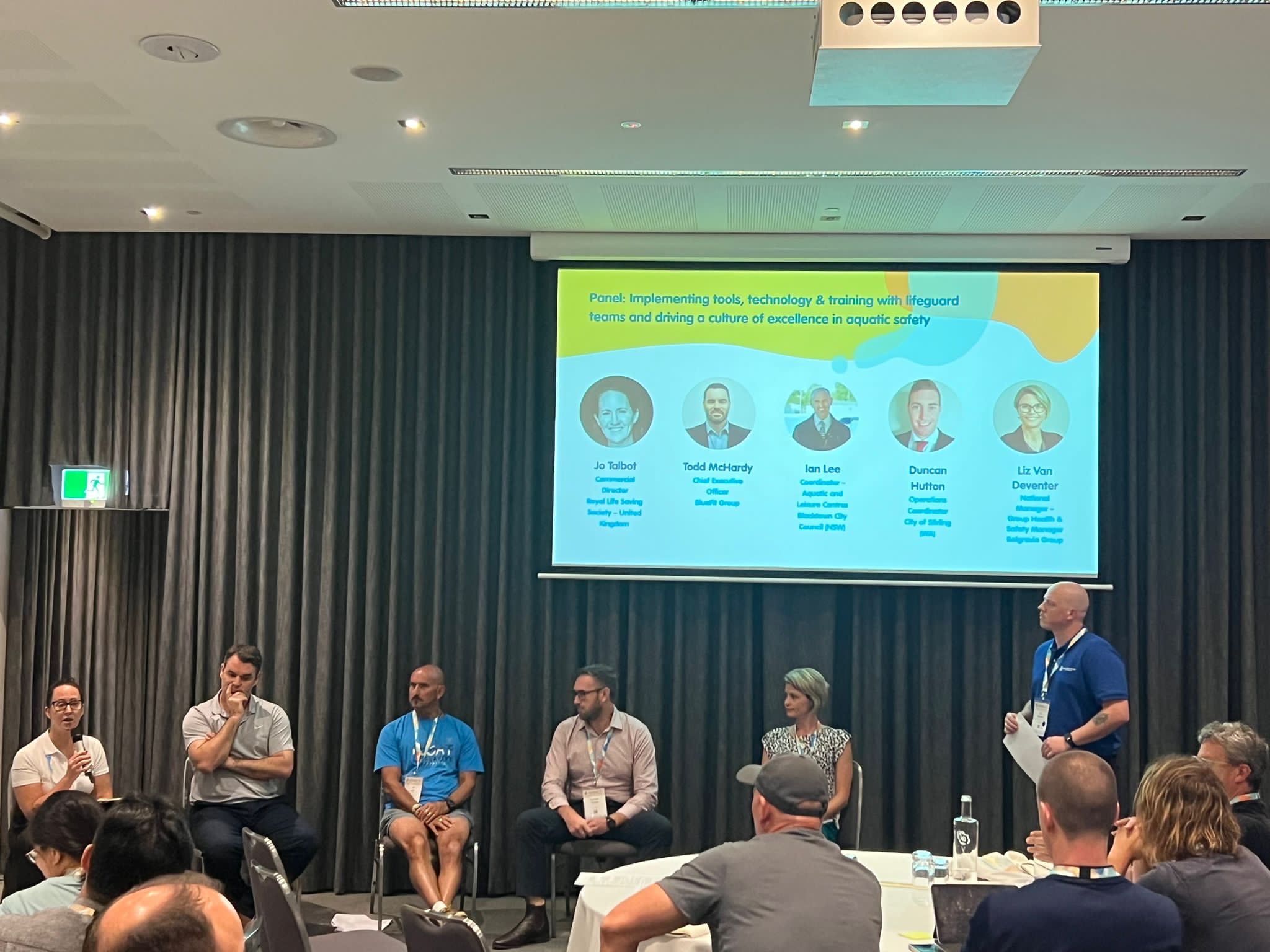Published: 18 December 2023
SUPER-POWERING LIFEGUARDS
Insights from the World Conference for Drowning Prevention Workshop
The "Super-powering Lifeguarding" workshop at the recent World Conference for Drowning Prevention in Perth marked an important moment in the evolution of safety management in aquatic facilities in Australia.
With more than 70 delegates in attendance from across the globe, the workshop explored the integration of AI and advanced management tools with lifeguarding culture, focusing on elevating standards and improving supervision practices in public pools.
Workshop Highlights:
Innovative Presentations:
The session featured experts like Dan Mulvey, Matteo Ferrarini, Darren Gorelick, Dr. Bernadette Matthews, and Shaun Jackson, who discussed AI-powered drowning detection, advanced supervision training and the use of virtual reality to test lifeguard detection capabilities.

Engaging Panel Discussion:
The panel featured experts such as Jo Talbot, Todd McHardy & Liz van Deventer and addressed critical issues, including the integration of technology with human behaviour and systems, the importance of maintaining excellence in aquatic supervision, and the potential impact of emerging technologies on lifeguarding culture and psychosocial safety. A key theme of the discussion was that panellists believed that AI will assist with management of lifeguarding, including optimising deployment.
Collaborative Workshop Session:
Participants developed strategies focusing on AI implementation in aquatic facilities under categories like 'Enhancing Practice', 'Policy/Standards', 'Cultural Considerations', 'Research and Development', and 'Advocacy & Awareness'.

The delegates reviewed and refined the following action statement:
Lifeguarding with AI and other Advanced Technology – Strategic Action Statement
Recognising the transformative potential of AI drowning detection technologies in bolstering safety at public pools and beaches, the participants of the World Conference on Drowning Prevention Super-powering Lifeguard Workshop declare:
AI technologies do not replace but rather complement the essential work of lifeguards.
While lifeguards continue to play a crucial role in prevention, detection, early intervention, education, rescue, and resuscitation, it is likely AI-enabled drowning detection will provide an additional safety layer to minimise fatal and non-fatal drowning incidents by facilitating earlier detection.
This strategic action statement underlines our dedication to enhancing aquatic safety in Australia through the judicious integration of AI drowning detection technologies.
We are committed to a future where technology and human expertise work together to create the safest aquatic environments.
The effective integration of these technologies with human systems must include:
- Policy Development: Formulating national guidelines and privacy standards to align AI technologies with safety regulations and ethical considerations.
- Enhancing Practice: Adapting lifeguard training to include AI technology use and interpretation, ensuring AI acts as a supplement to, not a replacement for, human vigilance.
- Cultural Considerations: Building a culture of technological adaptability among lifeguards, with an emphasis on collaboration between human expertise and AI assistance, and addressing potential issues of complacency in both patrons and lifeguards.
- Research and Development: Promoting research for AI technology refinement, focusing on accuracy, reliability, and non-discriminatory practices.
- Advocacy and Awareness: Advocating for funding, supporting AI deployment, understanding the psychosocial impacts on lifeguards, and insurance implications.
We pledge to foster a collaborative environment with technology providers, lifeguards, aquatic facility managers, and safety experts to ensure a smooth integration of advanced technologies and practices and address operational challenges cohesively.
Royal Life Saving Australia will refer the action statement to the National Aquatic Industry Committee for consideration for the development of national guidance.

